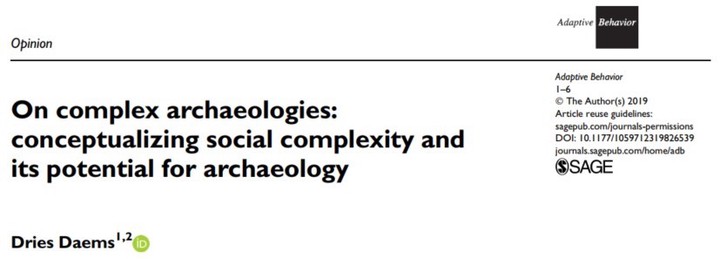 On Complex Archaeologies in Adaptive Behavior
On Complex Archaeologies in Adaptive Behavior
Abstract
This article surveys a number of approaches in complex systems thinking and their relevance for applications in the field of archaeology. It focuses in particular on the fundamental role of social interactions and information transmission as constituent elements for the development of organizational complexity on a community level. Given the impossibility of direct observations of these constituent interactions and practices, it is then outlined how this theoretical model can be applied on the material remains found in the archaeological record. It is discussed how material surroundings – including architectural structures and material objects – are used to shape and structure social interactions and practices in various ways. It is shown how complex organizational structures develop through underlying mechanisms of change such as diversification, connectivity and standardization, and how these can be applied in archaeological case studies. The presented framework will thus show how structures of social organization and development of social complexity can be inferred from the archaeological record.